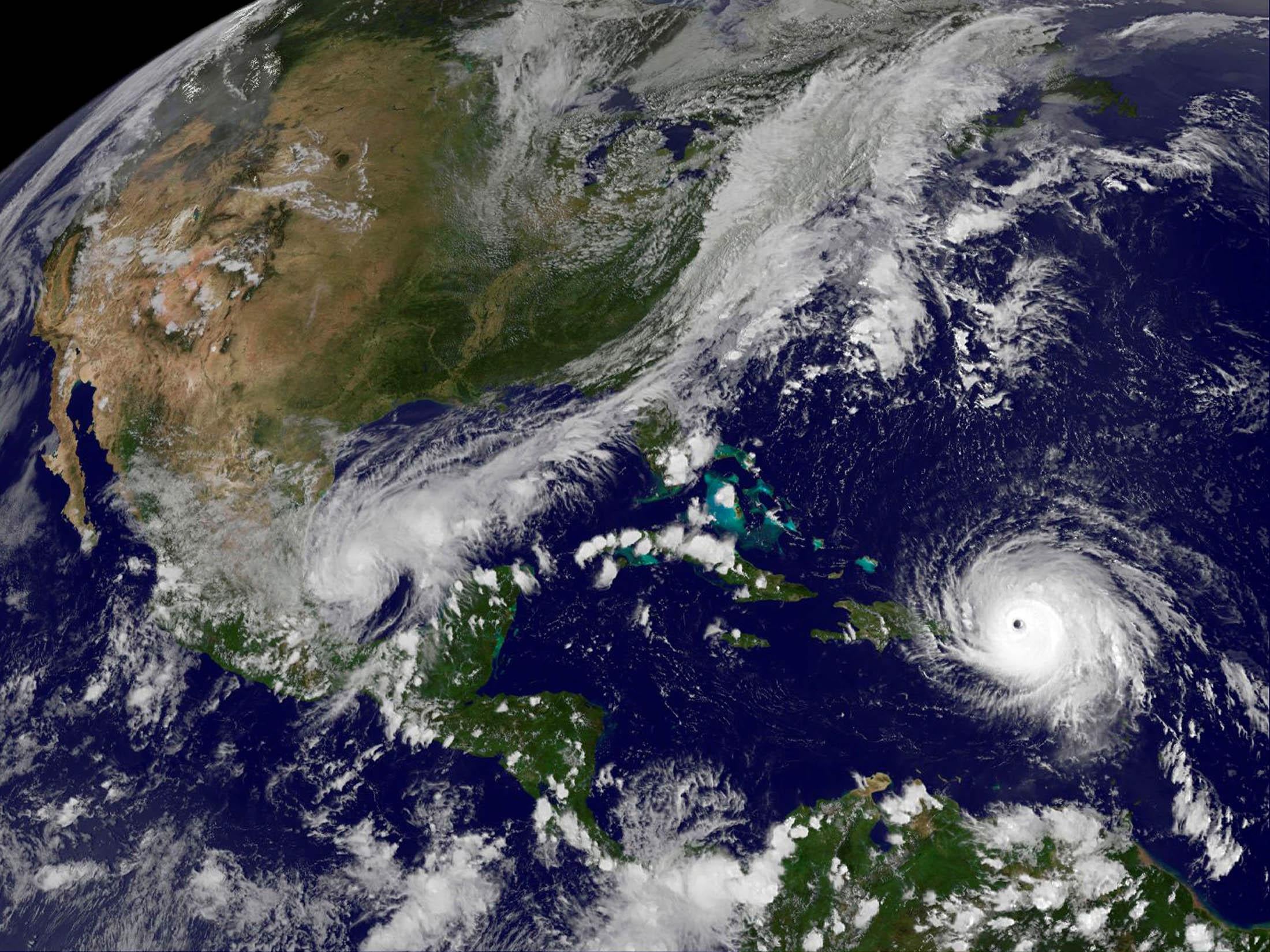Hurricane Irma: Three states not hit by major storm in 100 years declare emergency as tropical tempest nears
North Carolina, South Carolina and Georgia warn citizens as torrential wind and rain moves in on Atlantic coast

Your support helps us to tell the story
From reproductive rights to climate change to Big Tech, The Independent is on the ground when the story is developing. Whether it's investigating the financials of Elon Musk's pro-Trump PAC or producing our latest documentary, 'The A Word', which shines a light on the American women fighting for reproductive rights, we know how important it is to parse out the facts from the messaging.
At such a critical moment in US history, we need reporters on the ground. Your donation allows us to keep sending journalists to speak to both sides of the story.
The Independent is trusted by Americans across the entire political spectrum. And unlike many other quality news outlets, we choose not to lock Americans out of our reporting and analysis with paywalls. We believe quality journalism should be available to everyone, paid for by those who can afford it.
Your support makes all the difference.Shifting forecasts raised the threat to the south east from fierce Hurricane Irma and prompted emergency declarations in the Carolinas and coastal Georgia, including areas that haven't suffered a direct hit from a major hurricane in more than a century.
Georgia Governor Nathan Deal declared a state of emergency Wednesday for the state's 100-mile (160-kilometre) swath of Atlantic coast, which was last struck by a hurricane of force Category 3 or higher in 1898. His South Carolina counterpart, Governor Henry McMaster, declared an emergency for that neighbouring state as officials assessed the chances of receiving a major hurricane strike there for the first time in nearly 28 years.
“It is a precaution. This is not an order of evacuation,” McMaster said in Columbia, South Carolina's capital, adding evacuations could be ordered as early as Friday — if needed. “Assume it's arriving tomorrow morning and get ready. When that hurricane is coming, when it gets close, it's too late.”
The last major hurricane to hit South Carolina was Hugo in September 1989. It slammed ashore just north of Charleston with winds of 135 mph (215 kph), causing 13 deaths in the state and $6.5 billion in damage in 1989 dollars.
Also, North Carolina Governor Roy Cooper declared a state of emergency taking effect at 8am. Thursday for the entire state. He added that all swift-water rescue teams the state had sent to Texas for Hurricane Harvey were expected back in North Carolina by Wednesday night.
Irma had winds of 185 mph (295 kph) on Wednesday, making it the strongest Atlantic Ocean hurricane ever measured, as it raked across Caribbean islands nearer to South Florida. Forecasters said tropical storm force winds could reach Georgia over the weekend and possibly South Carolina soon after, though Irma's exact path remained uncertain still days away.
In Chatham County, Georgia's most populous coastal county that includes the historic tourist city of Savannah, emergency management director Dennis Jones told reporters Wednesday that many first responders and emergency planners probably won't stick around if Irma arrives with the fury it has been showing in the Caribbean.
“We don't have a sturdy enough facility to support a major category storm,” Jones said, adding that “first responders, critical workforce” and others would establish operations further inland in Statesboro, about 60 miles (95 kilometres) west of Savannah.
Officials sounded similarly dire warnings Wednesday across the Savannah River from Georgia's oldest city in South Carolina.
Beaufort County Sheriff's Lieutenant Colonel Neil Baxley said that South Carolina county was preparing for the worst case scenario, which would be a landfall near Hilton Head Island with a storm surge of up to 15 feet (5 metres) of water. He added that police and firefighters, in a dangerous major hurricane, would have to evacuate until wind and surging waters abate.
“While every one of them is a hero, they are not superheroes,” Baxley said. “They are not immune to trees falling on them.”
In Georgia, Deal's emergency declaration covers the state's six coastal counties. It ensures aid for coastal communities and prohibits price gouging for fuel and other goods and services. It also relaxes regulations on trucking to allow increased deliveries of storm relief supplies.
“I urge Georgians in the affected counties to remain vigilant and be prepared,” Deal said in a statement.
Emergency officials said they worried that a dangerous storm surge would leave Georgia's Tybee Island on the Atlantic coast especially vulnerable, as well as those living along marshes and streams in the Savannah area. Savannah's downtown historic district, however, sits on a 40-foot (12-metre) bluff above the Savannah River.
Both Georgia and South Carolina had brushes last October with Hurricane Matthew. In Georgia, three people died and damage from falling trees and flooding in low-lying areas caused an estimated $500 million in damages. South Carolina also evacuated much of its coast as Hurricane Matthew skimmed past, coming ashore north of Charleston with winds of 75 mph (100 kph).
AP
Subscribe to Independent Premium to bookmark this article
Want to bookmark your favourite articles and stories to read or reference later? Start your Independent Premium subscription today.
Join our commenting forum
Join thought-provoking conversations, follow other Independent readers and see their replies
Comments